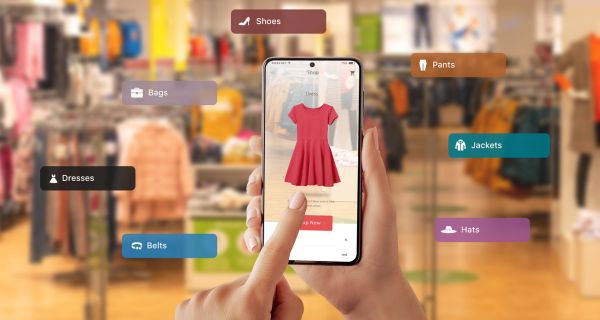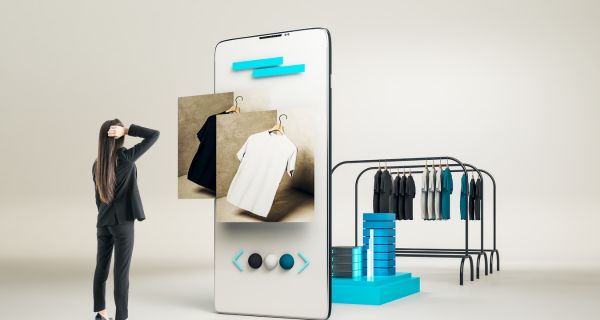If you were wondering what the next big thing in marketing and advertising is, it is immersive advertising. Technological advancements have revolutionized immersion and interaction, introducing unprecedented possibilities. These innovations will reshape how consumers access content for years, paving the way for groundbreaking ideas and experiences. In contrast, groundbreaking technologies like AI and VR are being leveraged alongside the emergence of new media channels like TikTok, which provide unparalleled opportunities for brand-consumer interactions.
The days of purchasing generic radio and broadcast space to reach a vast yet invisible audience are fading. Instead, the emphasis now lies on comprehending the consumer and curating an experience that optimizes the “when, where, why, and how” of brand engagement, ultimately resulting in a profoundly impactful encounter. This paradigm shift is not only advantageous for advertisers but also for consumers themselves. It signifies a departure from irrelevant and intrusive advertising, instead delivering personalized and meaningful brand experiences. In an era saturated with media, content, and a ceaseless stream of brand offers, such an approach is much needed. It fosters a deep connection with individuals, acknowledging their unique preferences and needs.
What is Immersive Advertising?
It is a form of advertising that uses immersive technologies to create interactive and immersive marketing experiences for consumers. We’re talking VR, AR, 360 video, and more. These technological developments aim to make the customers part of the action itself. It is so incredible and important because it can take a brand and business to the next level in terms of reach and engagement. It can help you attract and impress your audience, build trust and loyalty, and drive more sales and conversions.
For instance, IKEA used VR to let customers explore and design their dream kitchens. Coca-Cola used Augmented Reality to create a magical Christmas experience for shoppers. Marriott used 360 videos to transport travelers to exotic destinations.
Additionally, you need clear objectives and strategy, know your audience and their preferences, tell a captivating and relevant story, create value and deliver a superb user experience, measure and optimize your results, and iterate your process.
Now, let’s look at some of the benefits your business can have by including immersive advertisements in your arsenal.
Benefits of Immersive Advertising
In today’s digital age, ads surround customers everywhere they go. They have become more aware and selective about how they choose their products, increasing the need for a unique technique to stand out. Following are the ways you stand out and benefit:
Make Your Brand Stand Out and Shine

Have you ever seen ads that have had a lasting impression on you? Well, now it’s time for your business to make such an impact. Immersive marketing & advertising can capture your audience’s attention, spark curiosity, and stimulate their senses. It can also help you showcase your brand’s personality, values, and vision.
You can create a unique and distinct person about your brand and foster a stronger emotional connection with your audience, leading to higher brand recall, recognition, and loyalty.
Turn Your Prospects into Customers

Another benefit is that it can help you convert more prospects into customers. It can help you demonstrate your product or service features, benefits, and value proposition more realistically and compellingly. It can also help you address your audience’s pain points, needs, and desires.
You can create a more persuasive and influential message that motivates your audience to act. You can also create a more seamless and convenient customer journey that reduces friction and increases satisfaction.
Get More Bang for Your Buck
Most advertisement methods nowadays fail to amuse the audience; hence the ROI could be much higher with immersive marketing and ad strategy. It can help you optimize your ad spend, reach, and performance. It can also help you generate more data, insights, and feedback that can help you improve your marketing strategy and tactics.
Why Immersive Advertising is the way to go for businesses
Enhances Brand Trust and Engagement

Creating a buzz and boosting customer engagement is a top priority for brands and advertisers. In recent days, the world has witnessed numerous immersive marketing examples that excel in performance. According to the recent Zendesk Customer Experience Trends Report (2023), 77% of business leaders have witnessed a positive ROI through immersive experiences.
By delivering personalized experiences, it fosters a stronger connection between the audience and the brand, leading to increased trust and reputation. Another advantage is the rich media aspect, which empowers customers to explore ads and exercise control. They can interact with designs, colors, music, and more, enabling them to spend more time engaging with a brand and ultimately boosting brand engagement. Christmas experience
Moves Beyond Third-Party Cookies
Traditionally, many advertisers heavily relied on third-party cookies to target and retarget specific audience segments based on data analysis. However, utilizing third-party cookies has become challenging with evolving data privacy regulations and a shifting landscape. This is where immersive advertising comes to the rescue, offering alternative audience targeting methods without sole dependence on cookies.
It allows marketers to target audiences based on their engagement with the brand, delving deep into their interactions. For instance, marketers can analyze which car color or unique features a prospect showed interest in. Marketers can, thus, match customers’ interests, significantly enhancing the content consumption experience while adapting to the changing privacy landscape.
Optimizes Campaign Performance
Numbers matter in advertising; every marketer wants to monitor metrics such as ad opens and clicks closely. However, this process can be time-consuming, mainly if you rely on age-old techniques that generally take weeks or months to show results. In contrast, immersive advertising enables marketers to leverage sensor data and quickly identify campaign performance by observing how real people engage with the brand. This provides valuable insights into customer preferences and dislikes, allowing marketers to promptly make informed decisions and optimize their campaigns.
Breaks Boundaries
In our interconnected world, brands aspire to reach global audiences, and immersive advertising offers a ticket to ride. A remarkable advantage of it is its ability to transcend language barriers. Going immersive in marketing provides an effective avenue to capture audiences’ attention beyond one’s native language. This empowers brands to gain awareness within a specific geography and beyond, broadening their reach and increasing brand awareness.
Best Practices of Immersive Advertising
Immersive advertising can be a powerful and profitable marketing tool, but only if you do it right. It requires a lot of planning, execution, and evaluation to ensure success. Some of the best ways to do it include the following:
Know and Delight Your Audience
One of the best practices is to know and delight your audience. Immersive advertising is all about creating a consumer-centric experience that impacts how they think about the product. You need to understand your audience’s profile, behavior, and feedback to do that.
You must conduct market research, user testing, and user surveys to gather data and insights about your audience. You must analyze and segment your audience based on their demographics, psychographics, and behaviors. You must also monitor and respond to your audience’s feedback, comments, and reviews.
Add Value and Enhance the User Experience
Another best practice is to add value and enhance the user experience. Immersive advertising is not just about creating a flashy, fancy experience that wows your audience. Immersive marketing experiences are all about creating valuable and meaningful experiences that solve your audience’s problems, fulfill their desires, and satisfy their goals.
Immersion advertisements shouldn’t aim to create just engaging experiences but be relevant, functional, and engaging to your audience. You need to provide information, entertainment, education, or inspiration that your audience can benefit from. The content should also be easy to navigate and understand to ensure customer engagement remains intact.
Track and Improve Advertising Performance
The third best practice is to track and improve advertising performance. Advertising is an ongoing process that you must measure, optimize, and iterate to ensure effectiveness and efficiency.
You must set clear objectives and key performance indicators (KPIs) for advertising campaigns. You must use tools and methods to track and report your advertising results. You also need to use data and insights that can help you improve your immersive advertising strategy and grow your brand.
Conclusion
Brands must move beyond the “who” and focus on the “why, when, and where” to create memorable experiences. This golden age of immersive media demands creativity and impact, as consumers expect to be wowed by brands that leverage data and insights. It’s a thrilling time, and brands that can turn insights into extraordinary experiences will thrive.
Your brand can do the same. All you need is an intuitive no-code AR creator tool like the PlugXR Platform to get started with creating stunning immersive AR ads on the go.

